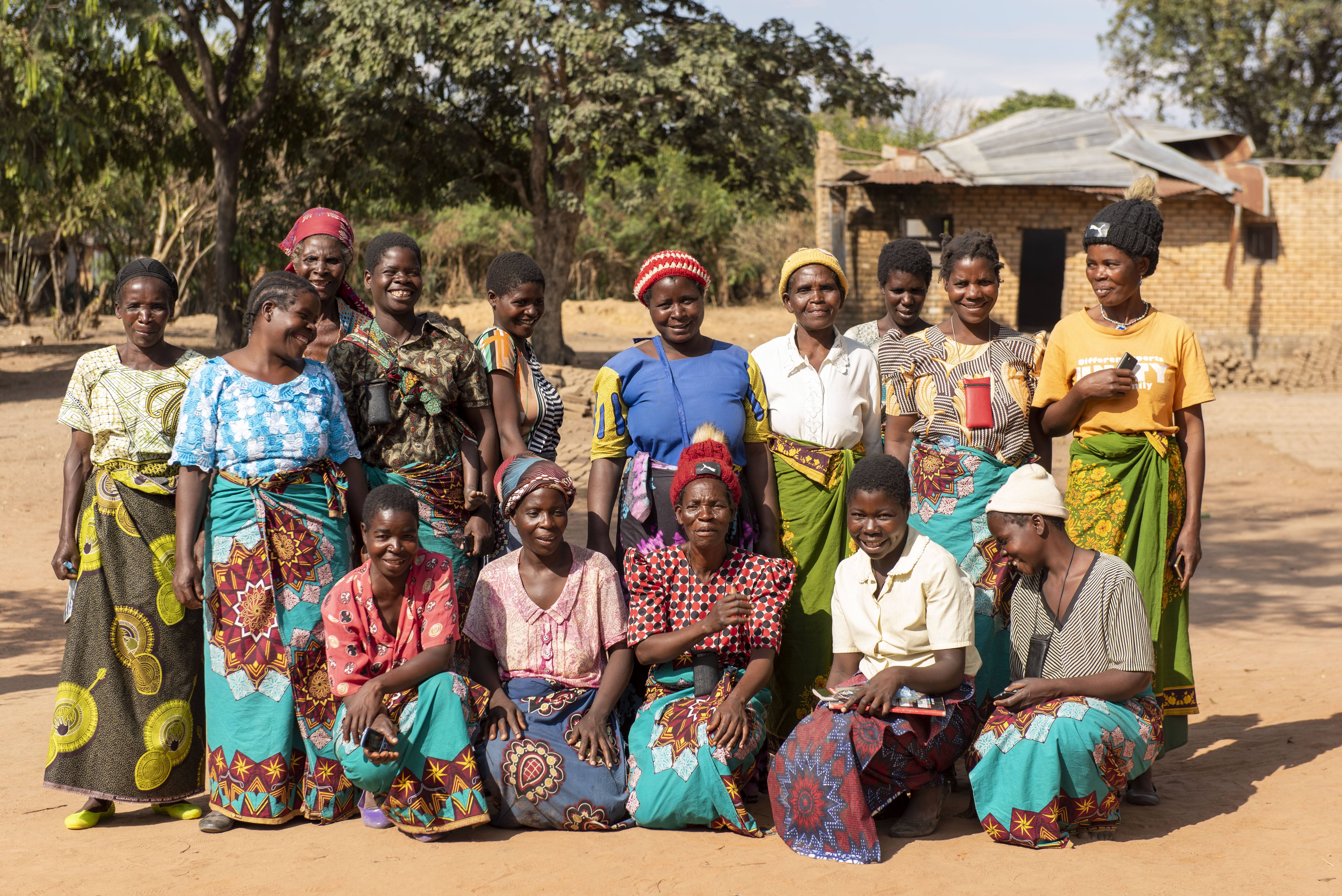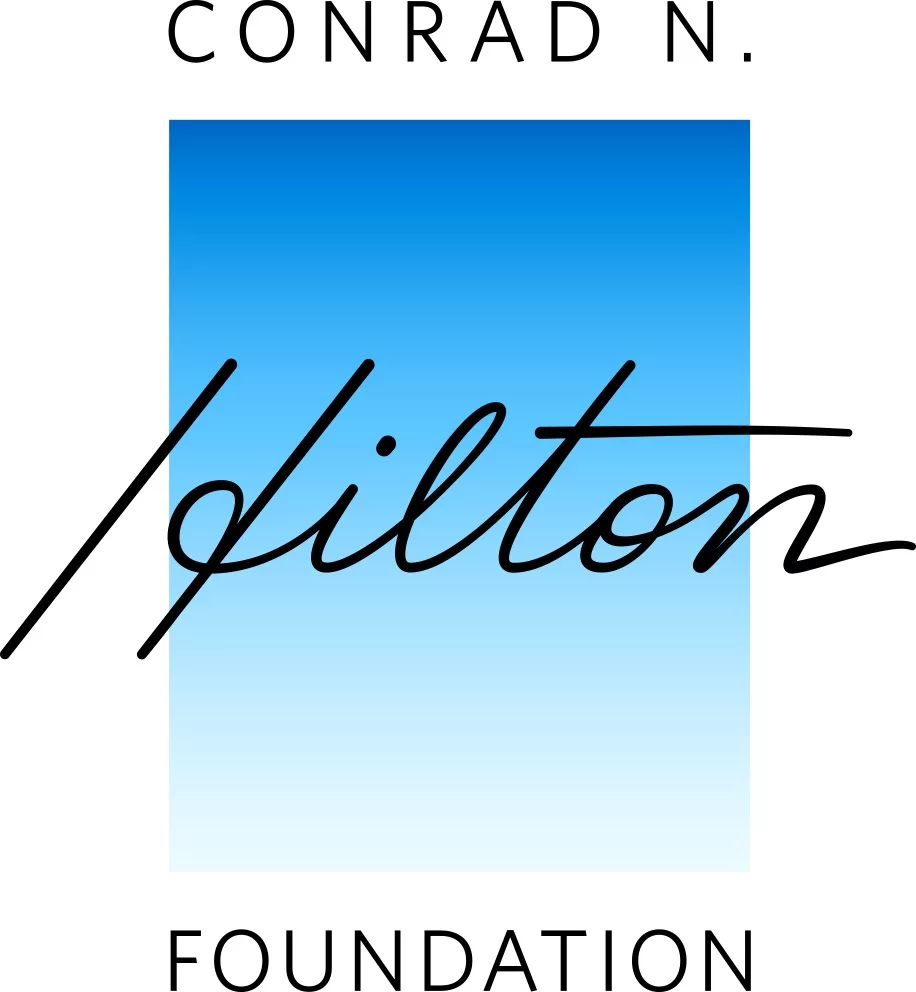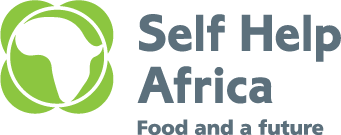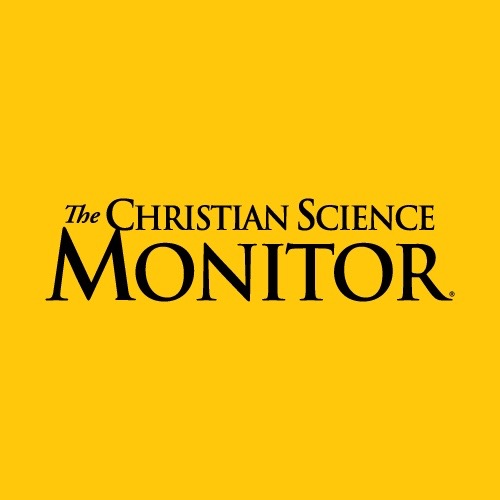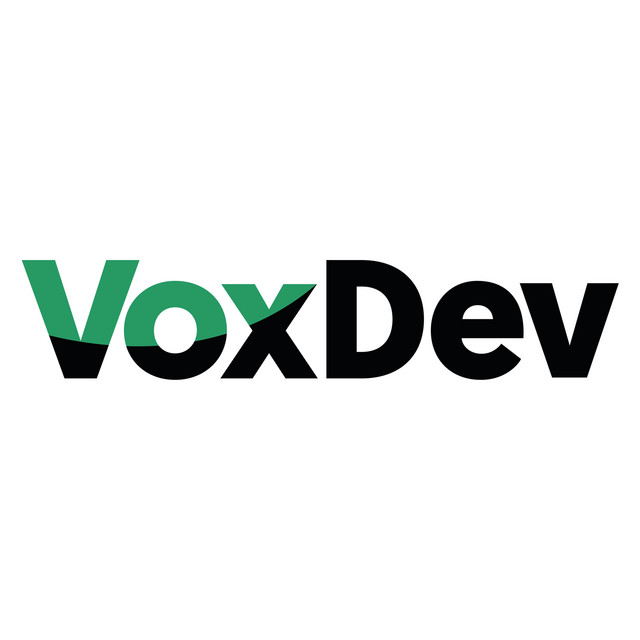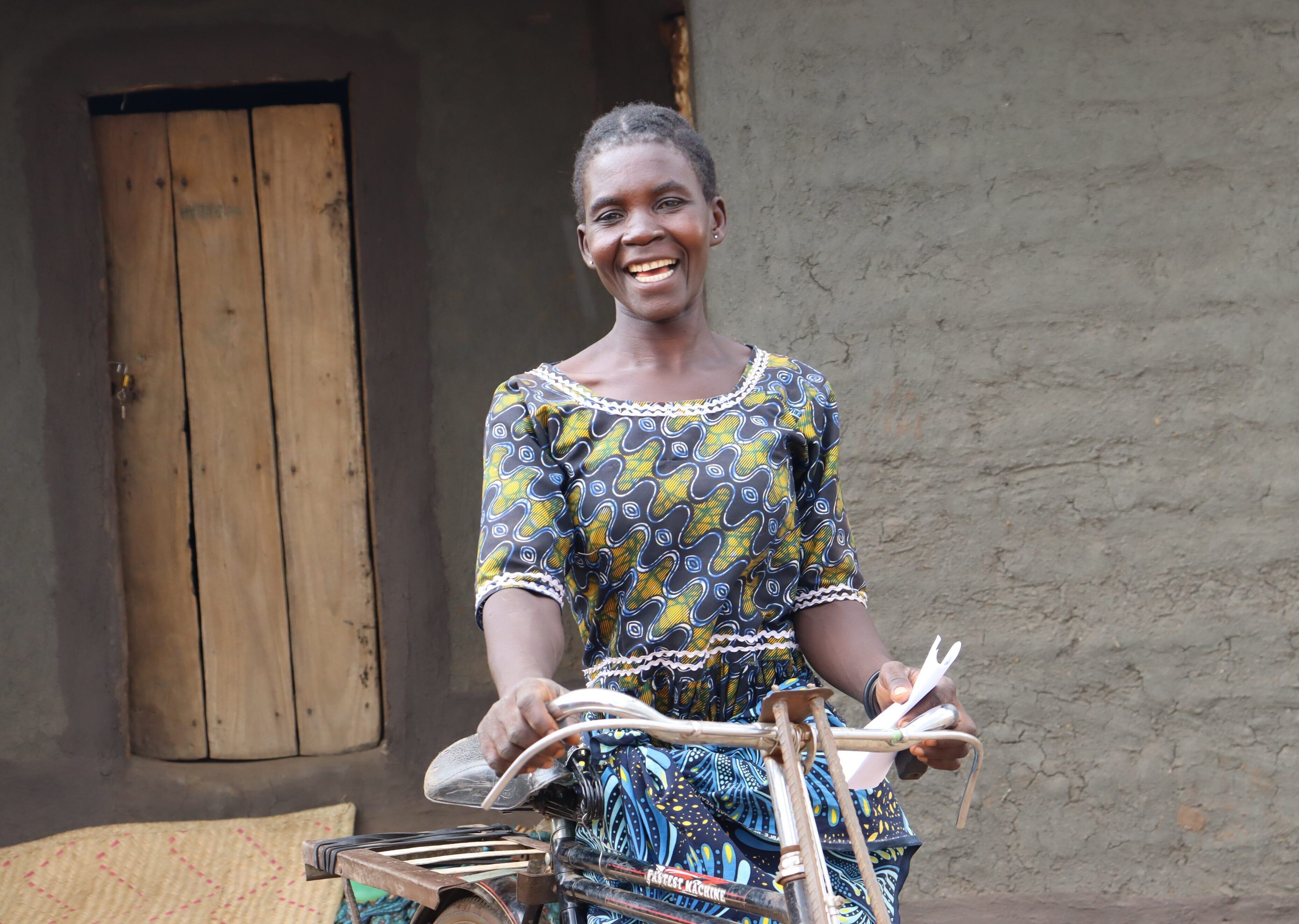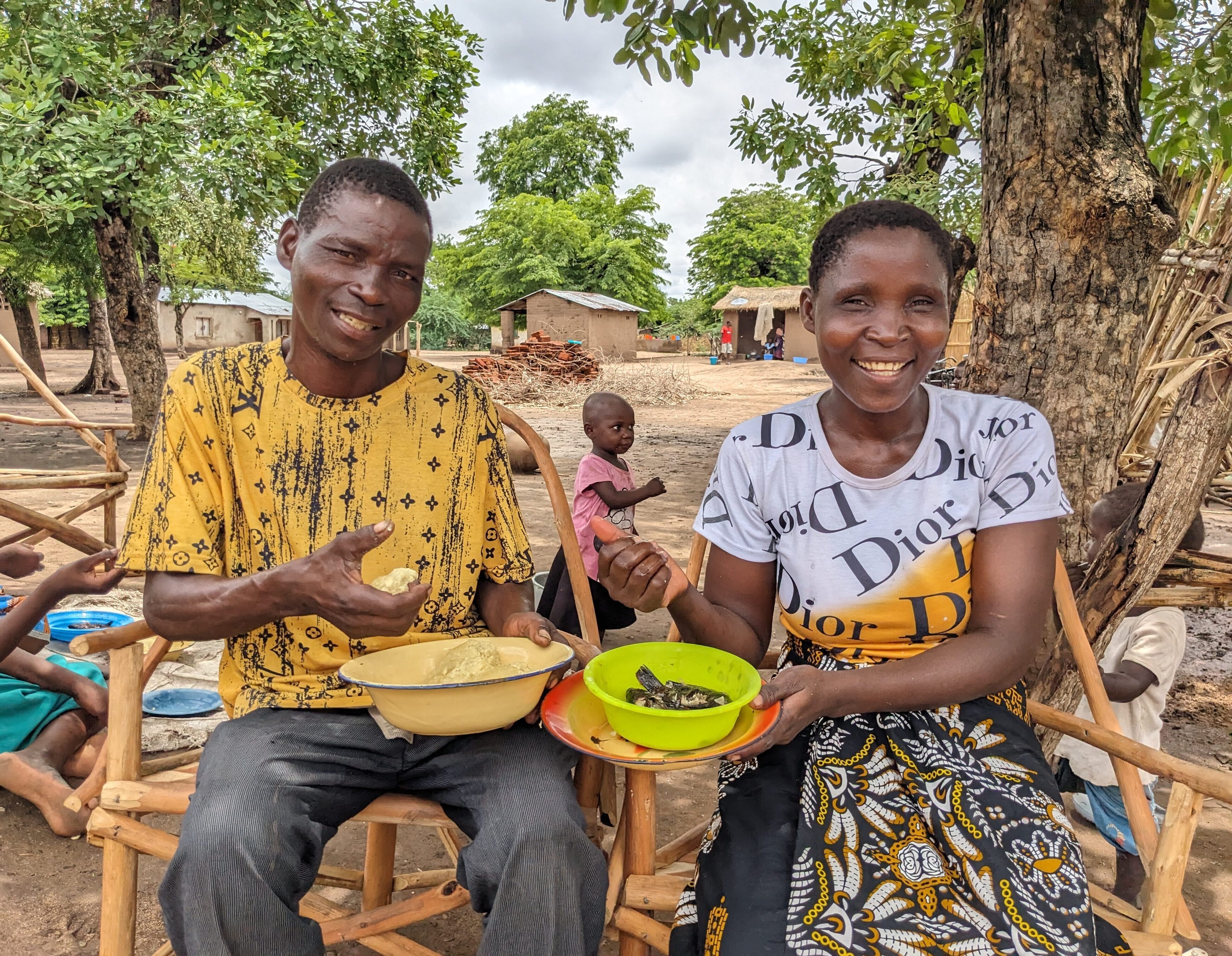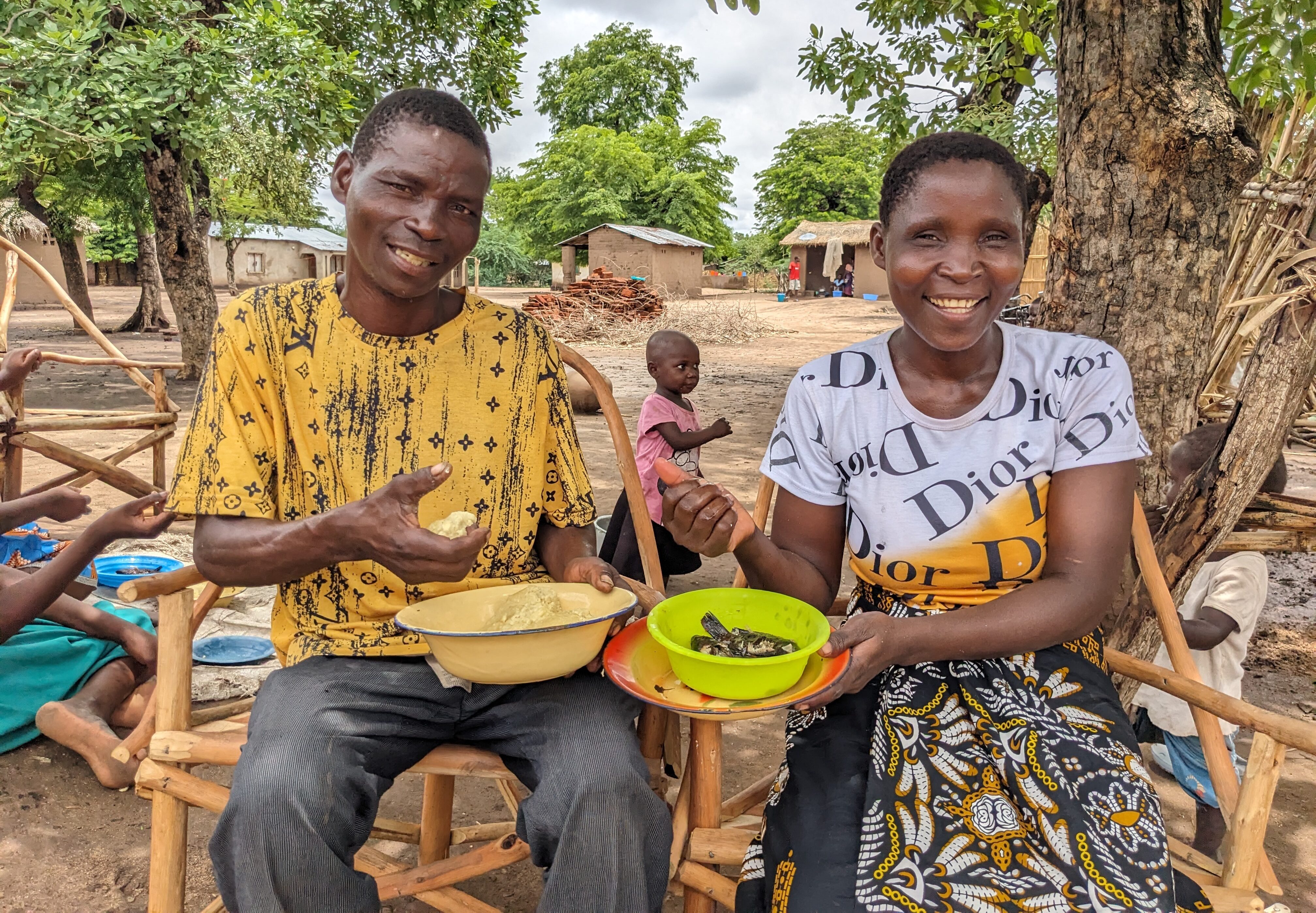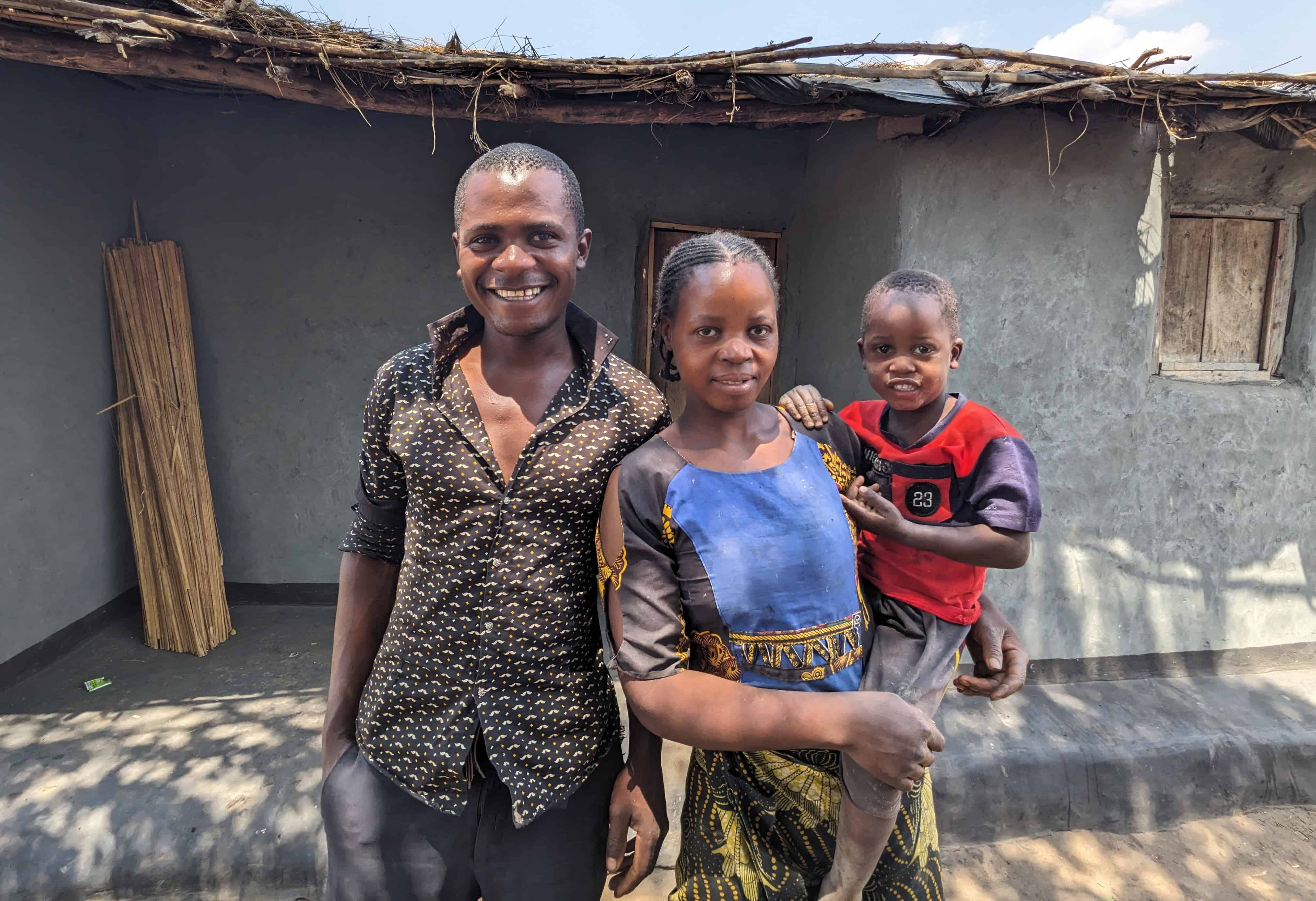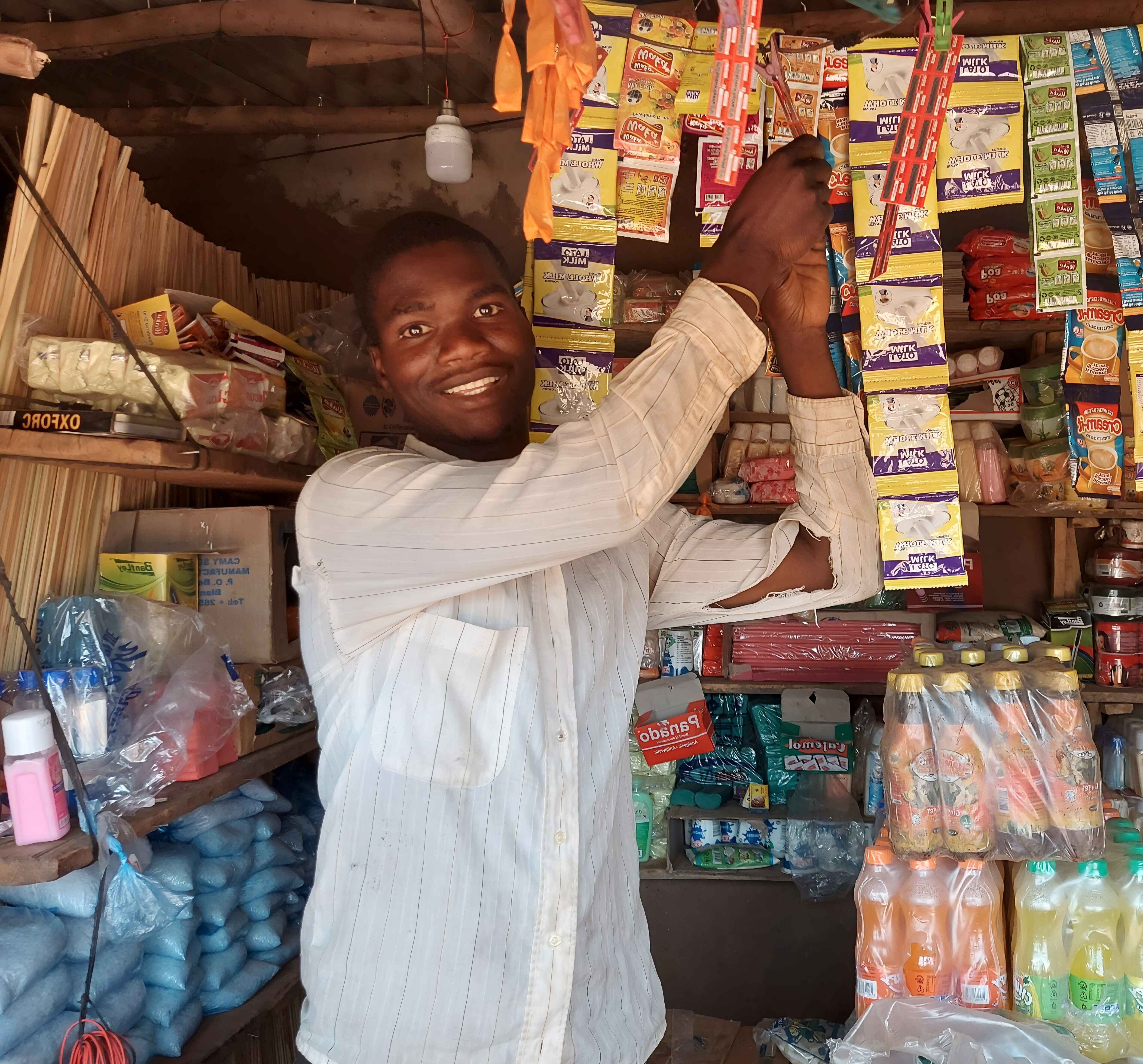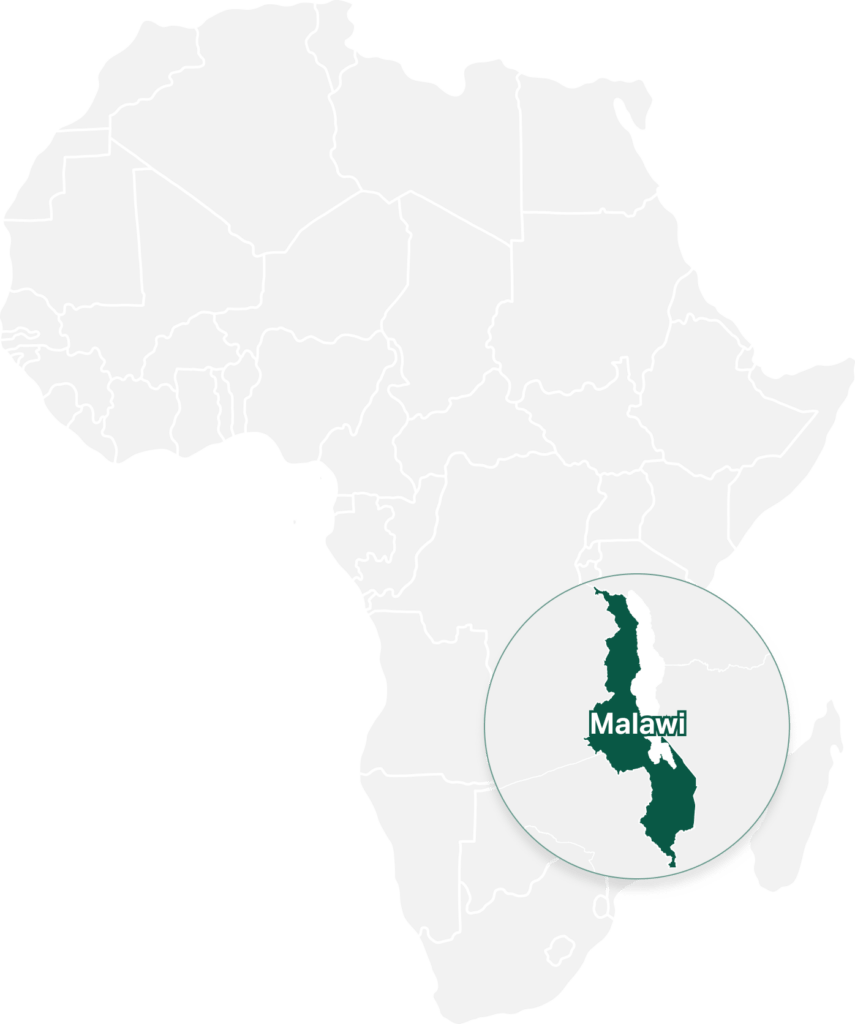
Our aim is to lift every person in Malawi above the extreme poverty line.
Cash transfers have measurable impacts across communities and contexts.
FEATURED ACTIVE Programs

Large transfer
Poverty Eradication II
Ongoing program launched in 2025 to deliver large one-time cash transfers to extremely poor households in Chiradzulu. Building on the 2023 pilot, Phase 2 is designed as a RCT and is implemented at the district-wide level.
Transfer Size
$550 one-time transfer per person
Target Number of Recipients
75,000
Outcomes
Similar programs have shown that participants often invest more in assets, experience better food security, and gain easier access to energy, education, and clean water, aligning with key UN Sustainable Development Goals.
More info will be made available as the program progresses.
Partners
Government of Malawi, Canva

EMERGENCY RELIEF
Urban Response
Ongoing program launched in 2024 to deliver cash for three months to food-insecure urban households identified via mobile phone targeting in Mzuzu.
Transfer Size
$40 monthly for 3 months
Recipients Reached
12,264
Outcomes
The project aims to generate learnings on the most cost-effective mix of in-person and digital methods to speed up cash delivery and maintain accurate urban registries, while also identifying what’s needed to scale phone-based targeting through government systems.
Partners
Government of Malawi
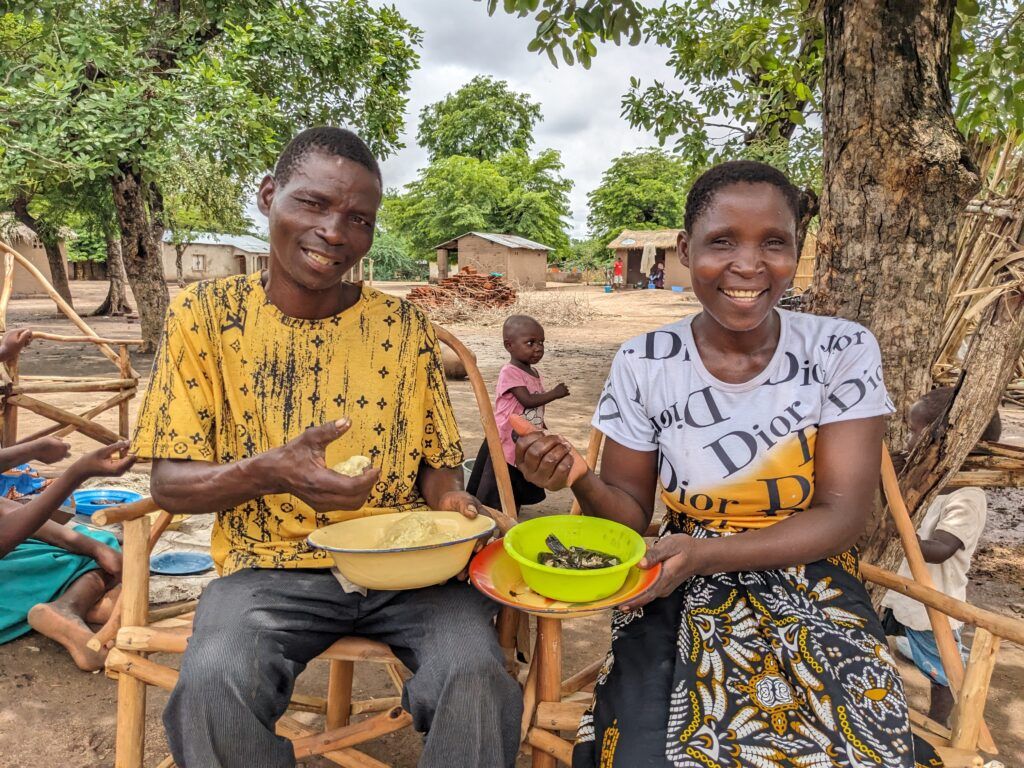
CLIMATE SURVIVAL
Climate Resilience
Launched in 2024 to deliver unconditional cash transfers to adults vulnerable to the effects of climate shocks in Chikwawa.
Transfer Size
$550 to adults in climate vulnerable farming households
Recipients Reached
10,456
Outcomes
Our midline monitoring found that, two months after payments, 85% of recipients had improved their resilience by meeting at least one of the three capacity targets (absorptive, anticipatory, or adaptive).
71% had purchased livestock, a key form of savings and asset-building, while 38% of recipients had invested in agriculture, whether through seeds, tools, or land preparation. Iron-sheet roofs increased from 35% to 44%, improving ability to withstand extreme weather. Recipients spent about a fifth of their transfer on food on average, and hunger fell by more than half from 69% to 32%. The share of households with any savings more than doubled from 20% to 49%.
Partners
FCDO

Cash for Health I & II
Launched in 2022 (Phase 1) and 2024 (Phase 2) to deliver unconditional cash to people living with complex HIV and cancer in Blantyre, Chiradzulu, and surrounding areas.
Transfer Size
Phase 1:
- $250 followed by $55 monthly payments for 1 year
- $250 followed by $80 monthly payments for 1 year
Phase 2:
- Standard cohort: $743 (initial $115, $43 monthly for 12 months, and a final lump-sum of $115)
- Vulnerable cohort: $1051 (initial $115, $68 monthly for 12 months, and a final lump-sum of $115)
- Palliative care cohort: once-off total of $250
Recipients Reached
Phase 1: 944
Phase 2: 470
Outcomes
Recipients have reported that cash transfers improved their quality of life and access to medical care. Comparing recipient survey responses before and halfway through the program:
- 20% more felt increased self-reliance
- 67% more were able to access nutritious food
- 30% fewer had to take loans
- 31% more had enough money for transport to health facilities
- 30% more had better quality housing
- 42% had more access to clean water
Partners
Medecins Sans Frontieres

Cash for Nutrition
Launched in 2021 to deliver monthly payments to pregnant and nursing women in Balaka and Ntcheu. Compares the impact of two different payment amounts on nutrition.
Transfer Size
30 monthly payments — one group receives $17 per month and the other receives $43 per month
Households Reached
5,724
Outcomes
From the midterm results, recipients in both cash treatment groups spend a bulk of their transfers on food, but the higher cash arm appears to allow for increased spending on other categories that could have an elevated and more sustained effect on nutrition outcomes.
We are also seeing reduced levels of depression in women and an increase in children’s dietary diversity score. There are fewer severely food insecure households in the high-cash treatment group, but no change in low-cash arm. We have not observed any change in stunting levels in either group.
Partners
Conrad Hilton Foundation, Power of Nutrition, Save the Children
FEATURED PAST Programs
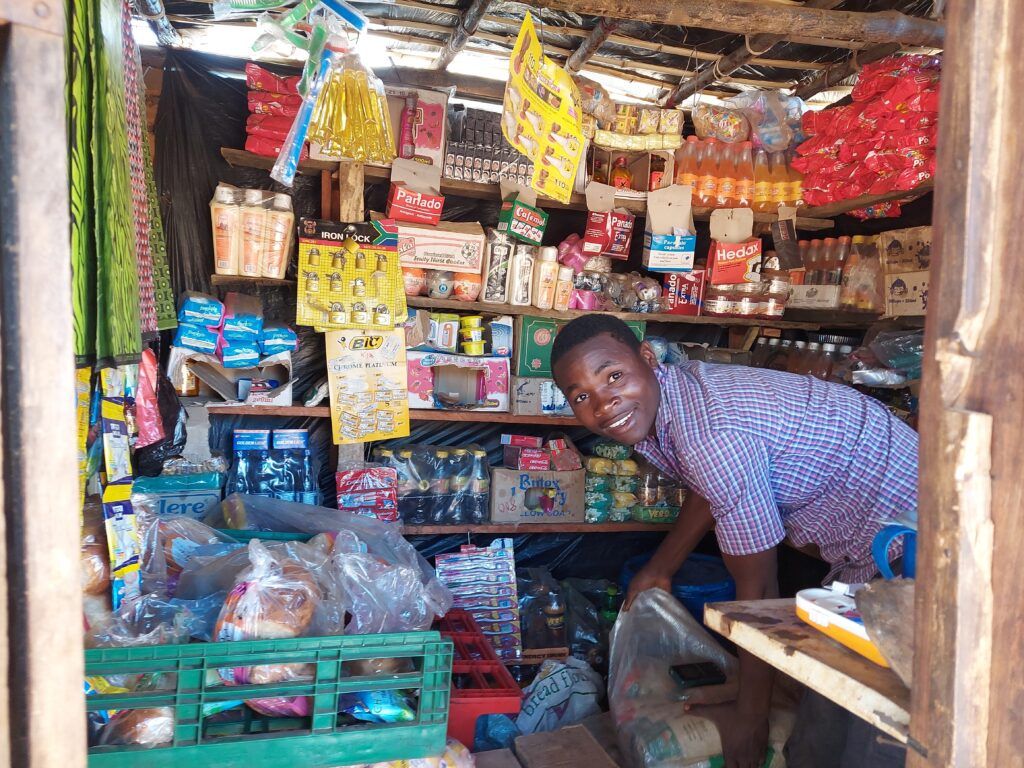
Large transfer
Poverty Eradication I
Launched in 2023 to deliver large one-time cash transfers to extremely poor households in Lilongwe Rural.
Transfer Size
$550 to every adult living in poverty
Recipients Reached
72,430
Outcomes
Three months after transfers, we find rapid gains in financial well-being and quality of life — with no significant inflation after cash was delivered.
Partners
Government of Malawi, Canva
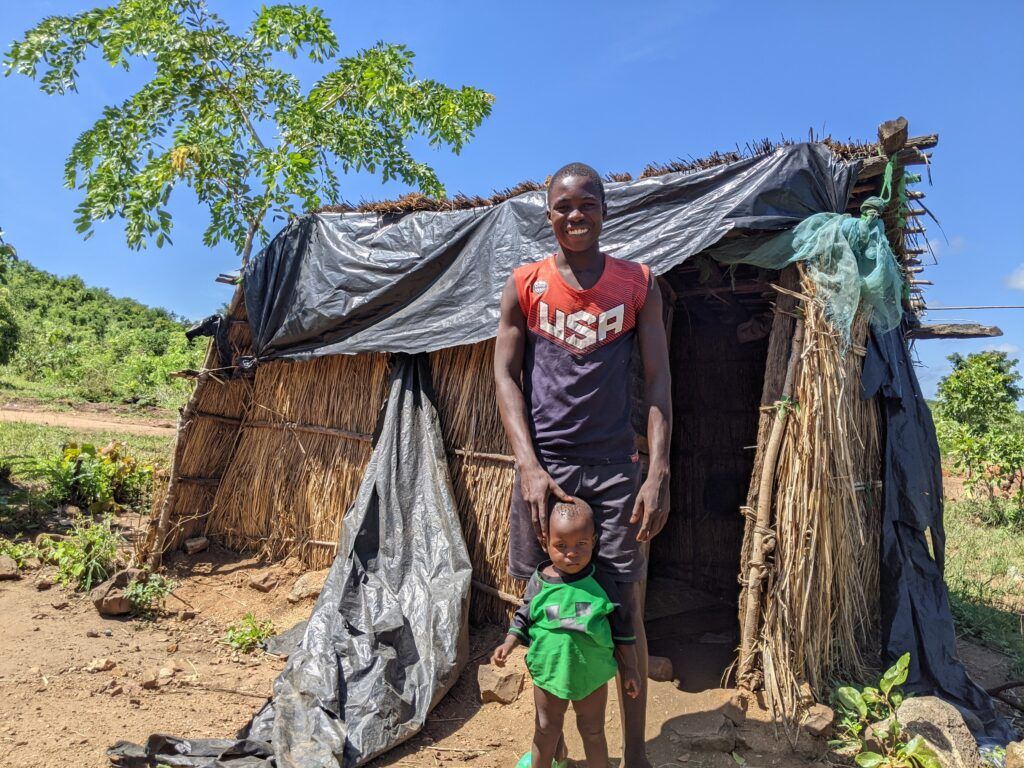
CLIMATE SURVIVAL
Climate Justice
Program from 2023 to 2024 that delivered cash to families who survived the world’s longest cyclone to spend on housing, food, and send their children to school in Nsanje district.
Transfer Size
$750 to internally displaced households, with access to land for relocation
Recipients Reached
2,719
Outcomes
This program provided cash transfers to communities participating in a government-organized relocation effort, moving from flood-prone areas to safer locations. 96% of recipients reported spending on productive assets, including building a home, purchasing livestock, and starting a new business and education. There was a 7.7x increase in the proportion of houses with iron sheet roofs. We observed a 235% increase in average total weekly consumption between the start and end of the project.
Partners
Scottish Government
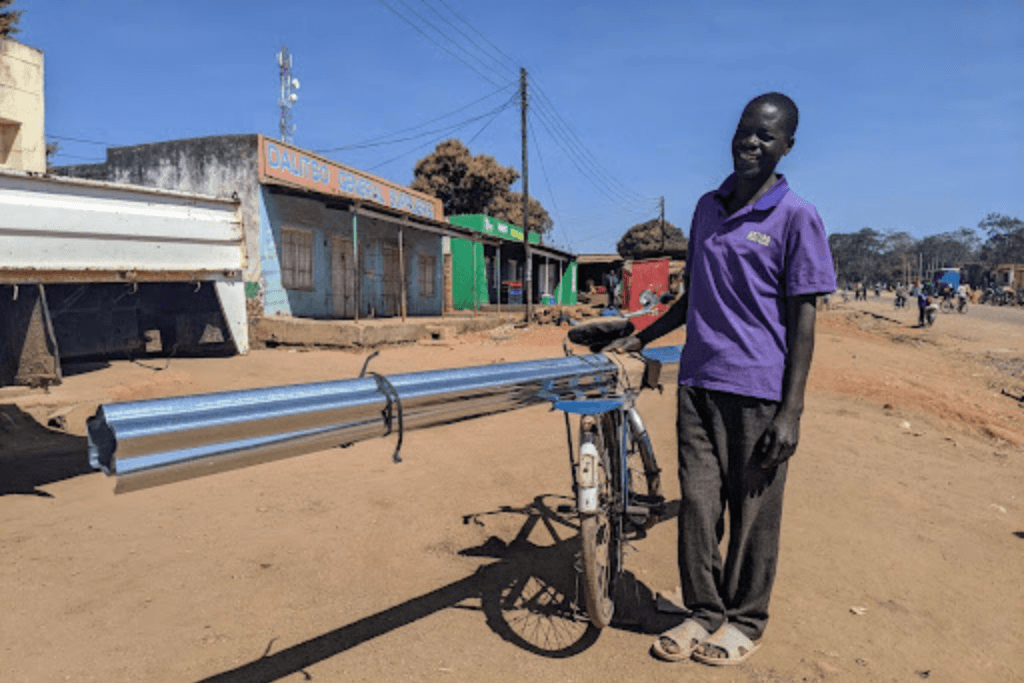
Basic Income
Basic Income Pilot
Launched in 2022 to deliver a monthly basic income to people in the poorest sub-district in Lilongwe Rural, and inform plans to address extreme poverty in Malawi at scale.
Transfer Size
$50 monthly for 1 year
Recipients Reached
12,794
Outcomes
This program leverages mobile-phone usage data to remotely identify and register people. This method is more cost-effective for targeting cash transfers when there are significant differences in poverty levels within a region and the geographic area is large.
Proxy means testing (PMT) can more precisely identify people living at a given level of poverty, but it is almost 7 times more costly than remote registration. With a limited budget, a combination of remote registration and PMT reduces costs.
Partners

CLIMATE SURVIVAL
Climate Resilience
2022 program that delivered cash and climate smart agricultural support to poor farmers in Balaka district, timed to help with the growing season, land preparation, purchase of inputs, and planting.
Hear about how giving cash helps people in poverty survive a climate crisis they did not create →
Transfer Size
$800 total, delivered across 2 transfers
Households Reached
6,017
Outcomes
This program was designed to support farmers on the frontlines of the climate crisis by helping them to access more resilient agricultural methods. After receiving cash, recipients reported:
- Diversifying their farms to grow 2+ crops, which improves soil fertility and controls weeds, diseases, and insects
- Transitioning to fuel efficient cooking tools such as the Chitetezo Mbuala stove
- Using 1+ water conservation techniques
- 46.2% increase in food security
Read more about GiveDirectly’s approach to climate adaptation here.
Partners
Self Help Africa
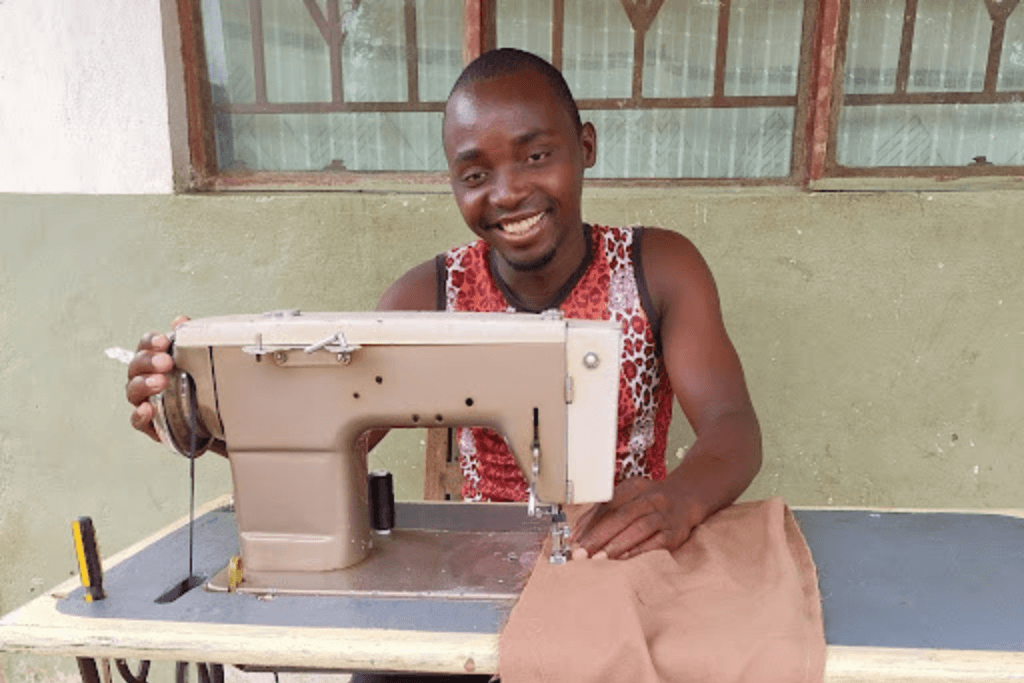
LARGE TRANSFER
Poverty Alleviation
2020 program that delivered large, one-time cash transfers to the poorest households in Mangochi and Balaka districts.
Transfer Size
$800
Households Reached
29,410
Outcomes
This cash transfer model draws on a substantial body of evidence demonstrating that large cash transfers have a significant positive impact on the lives of people in poverty. Recipients reported spending their funds on:
- food (79%)
- building a new house or improving their current one (79%)
- clothing and furniture (55%)
- farming investments(35%)
- savings (31%)

Large Transfer
Large Transfer Study
2019 program that delivered cash to the poorest households in Machinga and Chiradzulu districts. Included a randomized control trial component to compare how different cash transfer amounts affected food security, spending on food and other purchases, and non-agricultural income in rural households.
Transfer Size
Recipients received 1 of 3 transfer amounts: $250, $500, or $750. Those in the group receiving $250 got one transfer; those receiving $500 or $750 received 2 or 3 transfers over consecutive months.
Households Reached
11,497
Outcomes
Recipients reported sustained improvements in food security years after the program ended, along with gains in agricultural productivity, household assets, resilience and psychological wellbeing. No evidence of spillover effects on households not included in the program were found. Local goods prices were not affected.
Partners
IPA, USAID
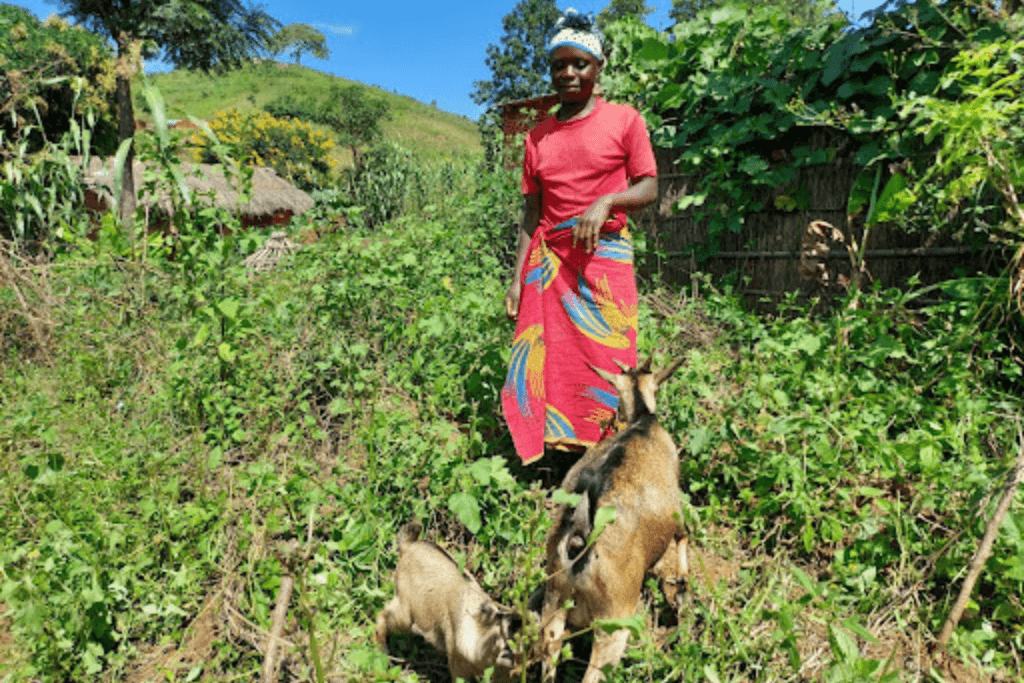
Cash+ Food and Nutrition Security
2022 program that delivered one-time cash transfers to farmers in Dedza district. Transfers were timed with the start of the lean season and were accompanied by nutrition and agricultural diversification interventions.
Transfer Size
$350
Households Reached
2,243
Outcomes
Recipients reported spending their transfers on food, agricultural inputs like fertilizer, and livestock to improve their families’ nutrition and earn income.
Partners
GIZ, Self Help Africa

EMERGENCY RELIEF
COVID-19 Emergency Relief
2020 program to deliver cash transfers to poor households impacted by the pandemic in the cities of Lilongwe, Blantyre, Zomba, Mzuzu, and Dzaleka refugee camp as part of Malawi’s National COVID-19 response plan.
Transfer Size
$35 per month for 3 months
Households Reached
33,720
Outcomes
The COVID-19 pandemic disrupted livelihoods and made it difficult for the poorest and most vulnerable families in Malawi to afford their basic needs. Here’s how recipients reported spending the cash they received:
- 47.7% purchased food
- ~14% invested in existing businesses or started new ones to help rebuild their livelihoods
- 13.3% covered school fees and education expenses
- 12.6% rebuilt or improved their homes
Partners
Government of Malawi, Conrad Hilton Foundation
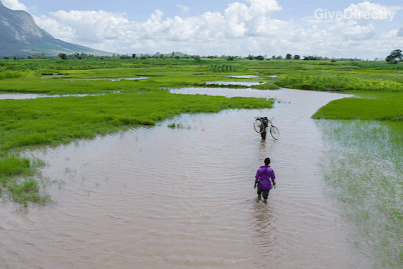
EMERGENCY RELIEF
Cyclone Ana Emergency Relief
2022 program that delivered emergency cash assistance to households affected by Cyclone Ana in Mulanje district.
Transfer Size
$75 monthly for 3 months
Households Reached
6,658
Outcomes
The aftermath of Cyclone Ana saw houses leveled by the flooding and families displaced into humanitarian camps. Recipients reported using their transfers to rebuild— 84% of people spent their cash on improving existing housing, or building a new house with better materials. Before the flood, many houses were built with mud and thatch and were not able to withstand the damage.
Other common ways people used their transfers:
- 71% bought food
- 22% bought clothes and furniture
- 11% put money into savings
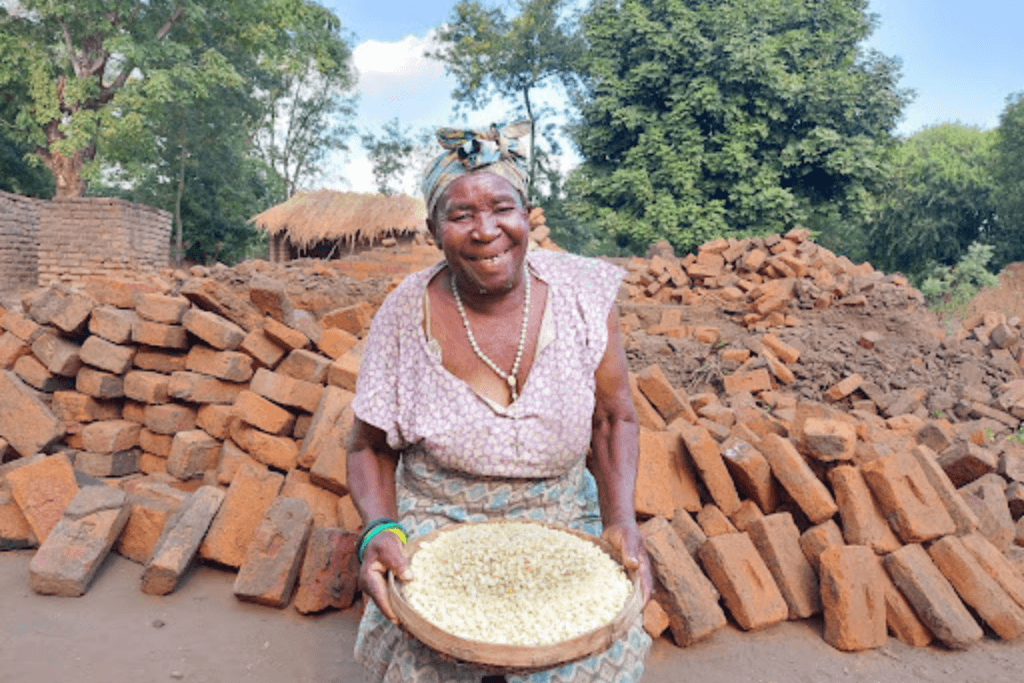
EMERGENCY RELIEF
Tropical Cyclone Freddy Emergency Relief
2023 program that delivered one-time cash transfers to households displaced by Tropical Cyclone Freddy in Chikwawa District.
Transfer Size
$300 one-time transfer
Households Reached
2,795
Outcomes
Communities in Chikwawa district are increasingly impacted by flooding as a symptom of the growing climate crisis in the region. Recipients used their cash to fortify or rebuild their homes with bricks and iron sheets as many mud-built and thatched-roof homes were damaged in the cyclone. Recipients also purchased food and invested in businesses like selling dry fish and raising goats or chickens.
In the News
Malawian families are using cash to transform their lives.
Poverty in Malawi
In the past 15 years, $16.5 billion has been spent on development assistance in Malawi. Yet in that same time, poverty rates have hardly changed. Malawi remains one of the poorest countries in the world with at least 70% of the population living below the international extreme poverty line of $2.15/day. Malawi is also a climate change “hotspot” characterized by declining agricultural productivity and very low resilience to shocks. These economic and climate challenges feed into the chronic food insecurity that affects 5.4M people in Malawi and leaves 35% of children under 5 years of age stunted.
The Government of Malawi’s First 10-year Implementation Plan of its ‘MW2063 Agenda’ (2021-2030) focuses on meeting the Sustainable Development Goals, which crucially include “No Poverty,” and emphasizes enhancing human capital, adopting climate-smart practices in agriculture and other sectors, diversifying the economy, improving productivity, and creating employment opportunities among others.
Sources: Government of Malawi, World Bank, IPC
We commend the impactful work of GiveDirectly in our shared mission to realize His Excellency Dr. Lazarus McCarthy Chakwera’s Vision of wealth creation. Through our collaboration, we are empowering communities, especially women and the youth, to thrive and fully engage in economic activities, ensuring that every contribution leads to tangible change.

Colleen Zamba
Secretary to the President and Cabinet of Malawi
